blog
Interview with photographer David Gardner
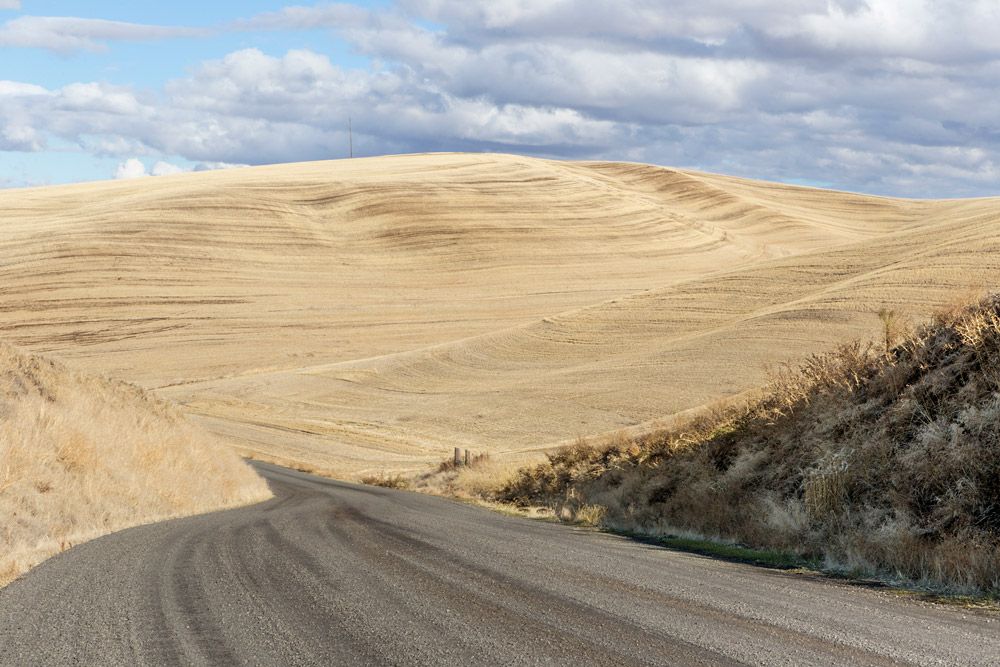
Palouse, WA. Study #47 (46 47.1689N 117 31.0581W)
David Gardner is a landscape photographer who spends part of the year travelling around North America in a motor home capturing the world in front of him. For more background see the 2014 F-Stop interview with Gardner here www.fstopmagazine.com/blog/2014/08/interview-with-photographer-david-gardner
F-Stop Magazine: Revisiting the story (see link above) of how you were introduced to photography as a kid and made your way toward that being your medium of expression, I wonder if your interest in landscape photography as your focus comes from growing up in the West or near the amazing landscape that can be found there or if it was something else?
David Gardner: Growing up in the West has surely influenced what and how I wanted to photograph. Before really pursuing image making, I always felt most comfortable in mountains or deserts. Wide open vistas, devoid of humans has always had an attraction for me. It was pretty natural to want to start photographing there – Photograph what you know. As time went on, I began to understand that I was at least as interested in the form and design of the elements in my images – no matter what the subject matter – as I was the place, and I started looking beyond just the natural landscape. If the composition makes my eye dance over its surface, I feel I’ve made a good picture. Emotionally, I still feel closest to the landscape and so continue to gravitate to it.
F-Stop: On your website you allude to the idea that as you have gone about making landscape photographs the presence of humans and human influences have been harder to avoid and begun to enter into your work. Where much of your work has been sort of pristine, quiet views with an occasional fence or man made structure, this new project, “Into the Anthropocene,” seems to signal a change in focus to some degree for your work. How did this change in focus and the project “Into the Anthropocene” come about?
DG: My whole evolution really began 15 years ago when I started photographing across the western U.S. for four months every year. At first I was almost exclusively making pictures of the seemingly pristine landscapes I found. It was what I always wanted to do. Spending that amount of time in the landscape allowed me to sort of slow down, center my thoughts and make better images.
But something else also occurred. I’d often find human elements in my images that I didn’t notice while making the image. It might be a piece of paper, carving in a tree or a jet contrail. For me, whenever a human element exists in a landscape image, my eye goes right to it. The object becomes the focus, or at least a distraction. I often would have to work pretty hard to find a position that didn’t include something that didn’t naturally belong in the scene. It came to a head for me while trying to photograph some white aspen trees in red foliage. There was a barbed wire fence between the trees and I, keeping me too far back by just a couple of feet. So I’m leaning up against this fence with the barbs digging into me trying to push in a little more, wondering if it was worth it. It dawned on me that it was happening far more often.
As sort of a way to deal with this frustration, I began actually looking for situations in the landscape where people passing through had made some sort of alteration. I didn’t know if it would work as a project or if I would like the images I made, but now that I was looking in this way, I found images everywhere. I expanded it to the urban landscape as well. It became my first real photography project, titled, Marking Our Place in the World.
Into the Anthropocene is a direct extension of the Marking project; Moving from individuals altering their surroundings, to how we are doing it as a civilization. But it goes deeper into the actual impacts our activity has brought to the landscape. I got a little side-tracked in between with my second project Life on Wheels: The New American Nomads, for which I was featured earlier in F-Stop, but I was always thinking about how to continue. The time in between served to nurture some of the concepts I explored in the Marking work while I tried to figure out how to proceed. During this time, I began to see and make landscape images that somehow conveyed human impact on the landscape.
So it was that in the fall of 2016, I found myself in the beautiful rolling hills of the Palouse wheat fields of southeastern Washington. I’d photographed here during two previous visits over the past four years and always come away with an odd conflicted feeling. While the Palouse is a verdant dreamscape of growing things, and beautiful beyond compare, it also represented a destroyed ecosystem – something I didn’t fully grasp just then. While I was there, the group of geologists and earth scientists, known as Working Group on the Anthropocene (WGA), formally voted to designate the current earth Epoch we are in as Anthropocene (of humankind), and presented it to the International Geological Congress for final votes, which are pending. It came to me that I was actually standing in the middle of one of the causes. It caught me off guard that a place and product so vital to human existence could also represent a huge and growing part of the problem. I began photographing in a way that emphasized the human alterations over the landscape.
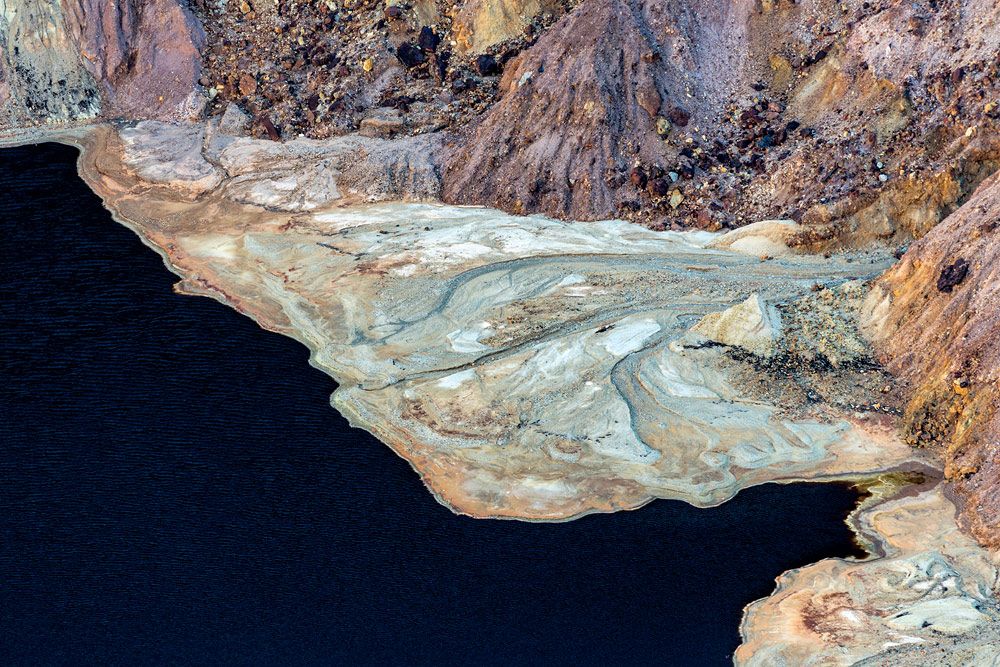
Lavender Pit Mine, Bisbee AZ. Study #11 (31,26.1499N 109,54.0141W)
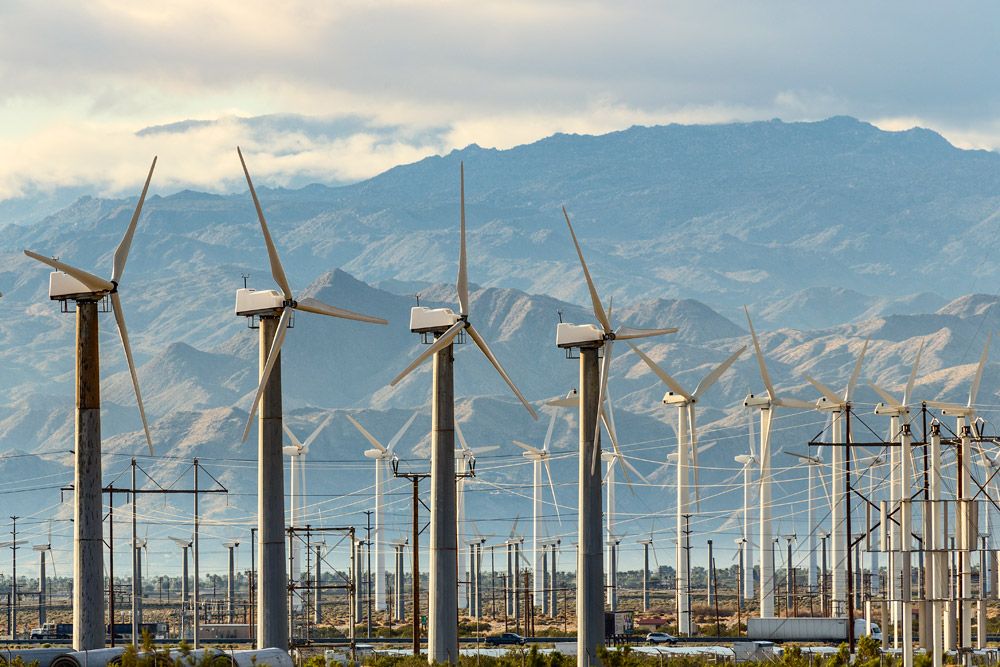
San Gorgonio Pass Wind Farm. Palm Springs, CA. Study #6 (33,55.4714N 116,33.125W)
F-Stop: I really enjoy the way this project encompasses food, water, energy, and mining for resources that go into so many products, and that it includes things we think of as not good environmentally (oil, mining) and newer “better” things like wind and solar that are typically seen as improvements over the old resources – but all of it is impacting the environment. Do you see yourself or this work as simply observational of this or do you aim to engage with the related issues in a more political or ethical way with this work?
DG: All of my projects are learning processes, so being observational seemed like the right way to begin for a subject so new to me. One first has to see a problem before it can be understood and addressed and I don’t feel that enough of the public is really seeing or believing what is happening to their landscape outside of city limits. All in the name of providing for them. It has been an eye-opening experience for me – even with all the time I spend traveling – now that I am looking more. So many of these sites are off the beaten track, that unless one knows about them specifically, one would never go there. I’ve intentionally made images with attached GPS coordinates so people can either visit on their own, or plug into Google Earth.
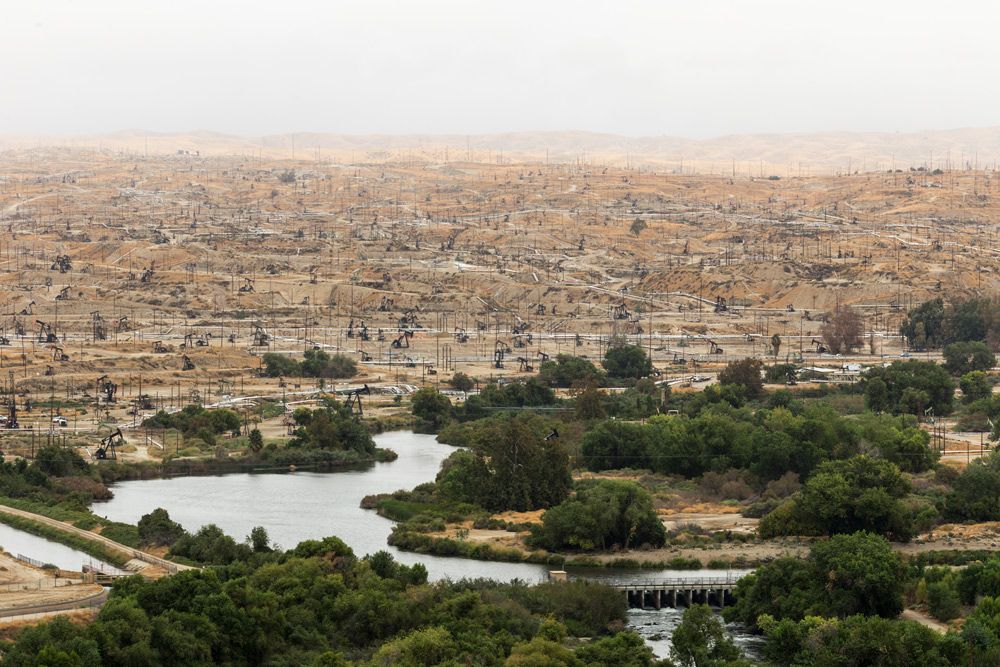
Oildale Oilfield. Bakersfield, CA. Study #4 (35,24.6134N 118,58.7944W)
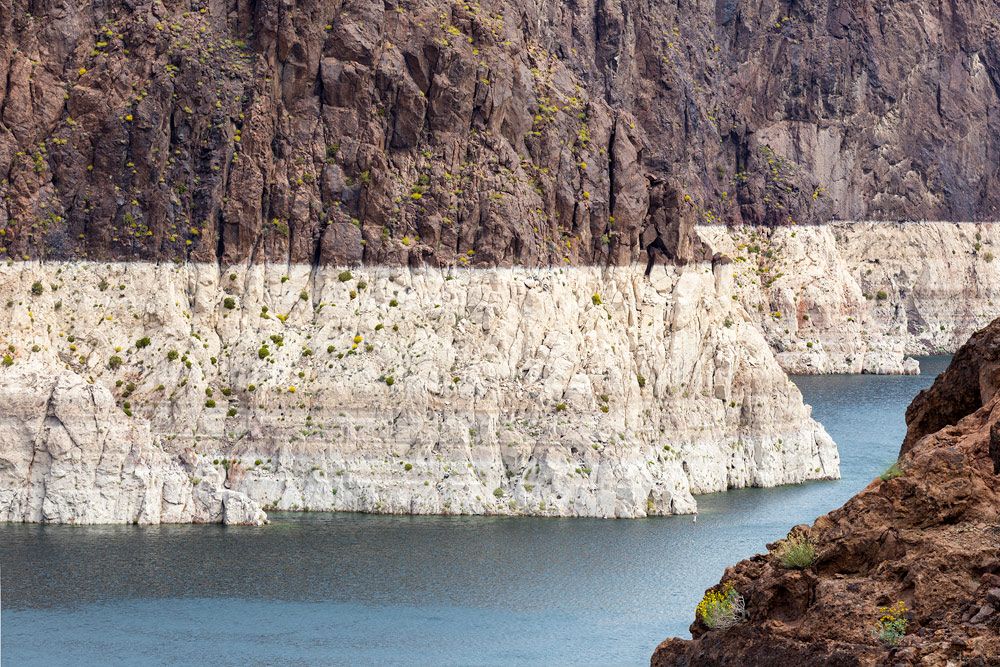
High Water Mark, Lake Mead, NV, Study #3 (36,0.9196N 114,44.0505W)
F-Stop: What do you want people to experience or think about when they look at these photographs?
DG: A goal with most of my photography is to make the most beautiful image I can no matter what the subject matter, so enjoying a picture on it’s own I think is important initially. It is so easy to be turned off to an image because the subject is hard to look at. I feel this is perhaps a gentler way to approach it. Within the images there are plenty of clues of the larger implications of land use and its effects. If the viewer comes away somewhat conflicted about enjoying the image and being concerned about what it represents, it approaches what I felt while making them.

Ivanpah Thermal Solar Plant, CA. Study #32 (35,34.4769N 115,29.6591W)
F-Stop: Do you have a favorite image or a favorite story behind an image in the series? If so, which one and why?
DG: On of my favorites right now is, Ivanpah Thermal Solar Plant, CA. Study #32. I love the way the sea of mirrors reflects desert sky at sunset and mimics a nonexistent lake. It really conveys an otherworldly, landscape smothering scene that I can look at a long time. How’s that for conflicted?
F-Stop: Are you working on any other projects currently?
DG: Into the Anthropocene is an ongoing work in progress that I see as a long-term endeavor. I am interested to see which direction the work will lead.
For more of David Gardner’s work see the current issue of F-Stop Magazine or visit: www.lightight.com
Location: Online Type: Featured Photographer, Interview, Landscapes
One response to “Interview with photographer David Gardner”
Leave a Reply
Events by Location
Post Categories
Tags
- Abstract
- Alternative process
- Architecture
- Artist Talk
- artistic residency
- Biennial
- Black and White
- Book Fair
- Car culture
- Charity
- Childhood
- Children
- Cities
- Collaboration
- Community
- Cyanotype
- Documentary
- Environment
- Event
- Exhibition
- Faith
- Family
- Fashion
- Festival
- Film Review
- Food
- Friendship
- FStop20th
- Gender
- Gun Culture
- Habitat
- Hom
- home
- journal
- Landscapes
- Lecture
- Love
- Masculinity
- Mental Health
- Migration
- Museums
- Music
- Nature
- Night
- nuclear
- p
- photographic residency
- Photomontage
- Plants
- Podcast
- Portraits
- Prairies
- Religion
- River
- Still Life
- Street Photography
- Tourism
- UFO
- Water
- Zine

The Anthropocene project is astonishingly good. Congratulations.